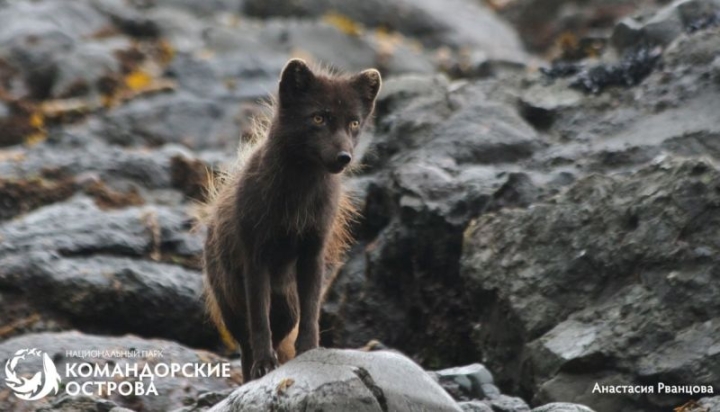Red Book Arctic foxes on Medny Island survived the winter on top dressing

A joint expedition of the Commander Islands National Park and the Nature and People Foundation on the ship Athena delivered a new batch of arctic fox food to Medny Island, the national park told KAMCHATKA-INFORM.
The Mednovsky Arctic Fox is listed in the Red Book of the Russian Federation. It is the island’s only terrestrial predator. Currently, the population numbers no more than 50 adults and is under threat of extinction due to lack of food supply.
As the expedition participants noted, the food imported last year helped the animals survive the winter in the almost complete absence of natural food on the island. The staff of the national park then equipped two feeding grounds. They were the first to be checked by the specialists who arrived at Medny this year.
“Arctic foxes visited the feeders almost daily. This was found out thanks to the camera traps installed last year. However, the threat of famine has not disappeared, which means that the feeding of arctic foxes must continue – this is the only way to save a unique subspecies,” said Irina Onufrenya, head of the wildlife conservation program at the foundation.
The food brought by the expedition is especially important now – arctic foxes have a breeding season, and weakened females with puppies are in dire need of food. In addition, building materials were delivered to the island to repair the feeding grounds and equipment of the cordons of the national park. Six specialists remained at Medny for research: one group will stay until the end of July, the second – until the middle of September.
“Without human help, the island arctic fox population may not survive. This year, the scientific group split into two teams to conduct important research at key locations: Glinka Bay and the Southeastern Marine Mammal Rookery. Scientists will have to assess the state of the food supply and check if there are any other threats, such as epizootics or exposure to toxins. We will have to work in difficult conditions, but this is the only way we will understand the reasons for the population decline and population dynamics,” said Anastasia Kuznetsova, director of the National park.
Photo: Anastasia Rvantsova/Commander Islands National Park.